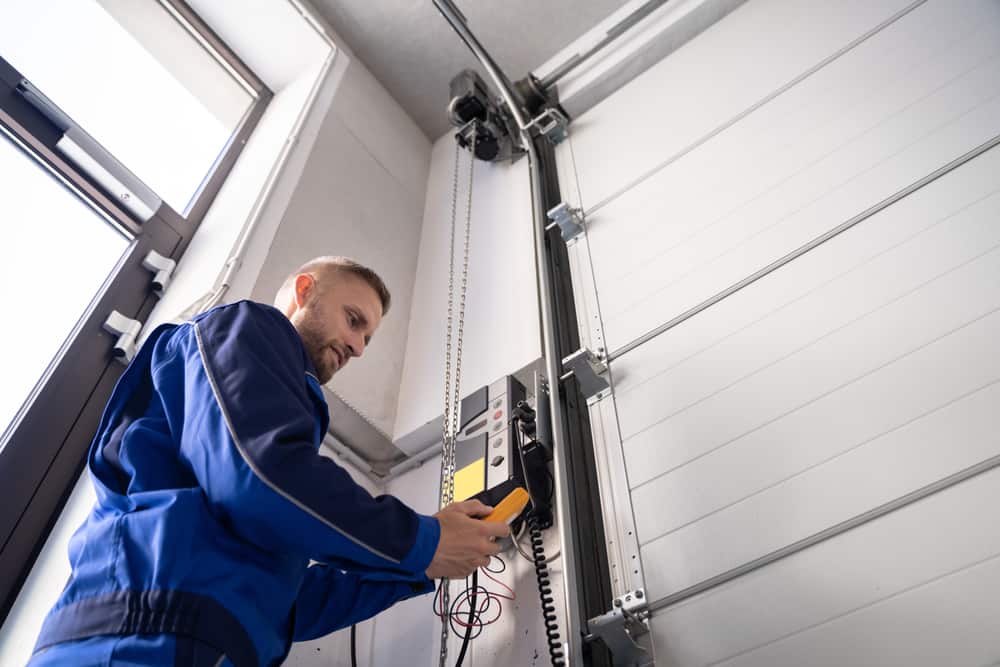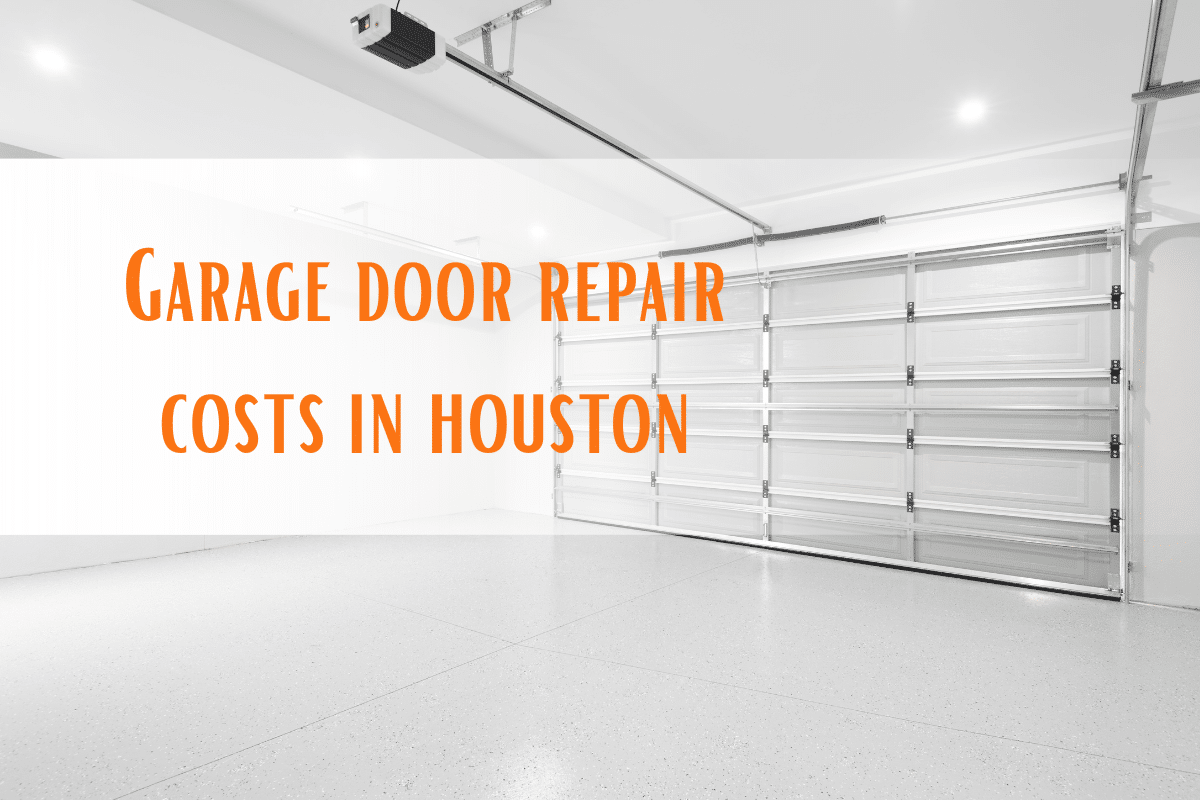Houston’s brutal combination of 95°F+ temperatures and 80% humidity creates a perfect storm that can destroy garage doors and everything inside them. If you’ve ever opened your garage door on a summer morning and felt like you stepped into a sauna, you know exactly what we’re talking about.
Here’s the thing – most Houston homeowners don’t realize their garage is slowly cooking their belongings, warping their garage door, and creating dangerous air quality issues. That musty smell? The rust forming on your tools? The way your garage door seem harder to open lately? These are all signs your garage desperately needs better airflow.
The good news is that strategic garage door ventilation can prevent thousands of dollars in damage while making your garage safer and more comfortable. You don’t need to replace your entire door or install expensive cooling systems. Sometimes, simple ventilation solutions can transform your garage from a humid hotbox into a functional space that protects your investment.
Why Garage Door Ventilation is Critical in Houston
Living in Houston means dealing with weather that feels like Mother Nature cranked up both the heat and humidity dials to maximum. When the heat index regularly hits 105-115°F and the air feels thick enough to swim through, your garage becomes ground zero for serious problems.
Think about it – your garage is a giant metal or wood box sitting in the sun all day. Without proper airflow, temperatures inside can soar 20-30 degrees higher than outside. Add Houston’s famous humidity, and you’ve created the perfect environment for destruction. Metal components start rusting faster than you can say “oxidation.” Wood warps and cracks. That expensive power tool collection? It’s slowly deteriorating due to the moisture.
But here’s what gets people’s attention – poor garage ventilation doesn’t just damage your stuff. It creates legitimate safety hazards. Carbon monoxide from your car can linger dangerously. Paint fumes and chemical vapors have nowhere to escape. Plus, all that trapped heat seeps into your home, forcing your AC to work overtime and sending your energy bills through the roof.
The financial impact hits hard, too. Replacing a warped garage door runs $1,500-$4,000 in Houston. Add in damaged belongings, higher cooling costs, and potential health issues, and suddenly that ventilation system looks like the bargain of the century. Smart ventilation typically pays for itself within 2-3 years through energy savings alone.
Humidity Control & Moisture Management
Houston’s humidity is legendary, and your garage door takes the brunt of it. Picture this – it’s a typical August morning, 75°F outside with 90% humidity. Your garage stayed closed all night, trapping yesterday’s heat. As the temperature drops overnight, all that moisture in the air condenses on every surface like an unwanted morning dew.
This daily moisture cycle wreaks havoc on garage doors. Steel doors develop rust spots that spread like wildfire. Wood doors absorb moisture, swell up, then shrink as they dry, creating cracks and warping that throw off the entire door alignment. Even those fancy composite doors aren’t immune – the humidity can cause delamination where layers start separating.
Our professional garage door technicians see this damage daily in Houston. They’ll tell you that doors with good ventilation last 5-10 years longer than those without. That’s because consistent airflow prevents the moisture buildup that causes most garage door failures. A few strategically placed vents can mean the difference between a door that lasts 10 years and one that makes it to 20.

Temperature Regulation & Energy Efficiency
Ever notice how your garage feels like an oven even hours after sunset? That’s because garages are heat traps by design. During Houston summers, your garage door absorbs solar radiation all day long. Dark-colored doors can reach surface temperatures over 140°F. Without ventilation, that heat has nowhere to go except into your home.
This heat transfer costs you real money. Studies show that attached garages without ventilation can increase home cooling costs by 15-20%. For a typical Houston home, that’s an extra $30-50 per month during summer. Over a cooling season, you’re looking at $200-400 in unnecessary AC costs just because your garage is overheating.
Smart ventilation changes the game completely. By creating airflow paths, hot air naturally rises and escapes while cooler air enters from below. This passive cooling effect can drop garage temperatures by 10-20 degrees without using any electricity. Some Houston homeowners report their garage stays within 5-10 degrees of outside temperature with proper ventilation – a massive improvement over the 20-30 degree difference without it.
Garage Door Longevity & Protection
Your garage door represents a significant investment – typically $1,500 to $4,000 for quality installation in Houston. Yet without proper ventilation, you’re essentially putting that investment on fast-forward to failure. The combination of heat, humidity, and poor airflow creates a perfect storm of deterioration.
Springs are usually the first casualty. These high-tension components already work hard lifting your door. Add in Houston’s humidity, causing rust and heat, causing metal fatigue, and spring life gets cut in half. What should last 10,000 cycles might fail at 5,000. At $200-400 per spring replacement, that’s expensive maintenance you could avoid.
The door panels themselves suffer too. Steel doors develop rust that starts small but spreads aggressively in humid conditions. Wood doors go through extreme expansion and contraction cycles that cause splitting and warping. Even modern insulated doors can fail when foam insulation breaks down from heat exposure or moisture infiltrates the layers.
Track alignment is another hidden victim. As doors warp and swell from humidity, they put uneven pressure on tracks. This causes premature wear on rollers, creates noise, and eventually leads to doors that stick or jam. Houston garage door repair companies report that ventilation-related damage accounts for nearly 40% of their service calls. That’s a lot of preventable problems.
Types of Garage Door Ventilation Systems
Not all ventilation is created equal, especially in Houston’s challenging climate. The key is choosing systems that move air effectively while keeping rain and pests out. Let’s break down your options from simple to sophisticated.
Passive ventilation uses physics to your advantage. Hot air rises, creating natural convection currents. By installing vents high on your garage door and low on the walls, you create a chimney effect. Air naturally flows without any power needed. These systems work 24/7 and cost nothing to operate. The downside? They’re less effective during Houston’s still, humid days when air barely moves.
Active ventilation adds powered assistance. Exhaust fans pull hot air out while intake vents bring fresh air in. These systems really shine during peak summer heat, moving massive amounts of air to keep temperatures down. Solar-powered options are popular in Houston since they run most when you need them most – during sunny, hot days. The trade-off is higher upfront costs and occasional maintenance.
Integrated garage door vents represent the newest technology. These vents are built directly into door panels, maintaining the door’s appearance while providing airflow. Some feature louvers that close automatically during storms – perfect for Houston’s unpredictable weather. Premium models even include humidity sensors that activate fans when moisture levels spike. While pricier, they offer the best protection with the least hassle.
Ventilation Solutions for Houston Garage Doors
Finding the right ventilation solution means matching your specific needs with Houston-appropriate options. Every garage is different, but certain solutions consistently perform well in our climate.
For existing garage doors, retrofit ventilation kits offer the easiest upgrade path. These kits include vents designed to fit standard door panels without major modifications. Installation typically takes 2-3 hours and costs $200-500 for materials. The best kits feature angled louvers that keep rain out while allowing maximum airflow. Houston homeowners particularly like models with built-in screens to keep mosquitoes at bay.
New garage door installations open up more possibilities. Manufacturers now offer doors with integrated ventilation designed specifically for hot, humid climates. These doors feature vents positioned to maximize convection while maintaining structural integrity. Some include smart features like humidity-activated fans or app-controlled operation. While costing 20-30% more than standard doors, they provide superior protection and convenience.
Don’t overlook complementary ventilation either. Ridge vents, soffit vents, and gable fans work together with door ventilation to create whole-garage airflow. The most effective Houston garages use multiple ventilation points to ensure air keeps moving even on still days. This systems approach costs more upfront but delivers dramatically better results than relying on door vents alone.
Expert Tips & Houston-Specific Solutions
First tip – positioning matters more than quantity. Three well-placed vents outperform six poorly positioned ones. Hot air rises, so high vents are essential. But you also need low intake vents to create flow. The sweet spot is vents placed in the top third and bottom third of your door, staggered to create diagonal airflow patterns.
Timing your ventilation upgrades makes a difference, too. Late winter or early spring gives you time to test systems before peak heat arrives. This also aligns with Houston’s construction season when contractors are less busy and materials are readily available. Plus, you’ll start saving on cooling costs right when bills typically spike.
Material selection requires Houston-specific thinking. Aluminum vents resist corrosion better than steel in our humidity. Plastic vents might seem economical, but they often warp in extreme heat. Marine-grade stainless steel costs more but lasts decades in Houston conditions. Similarly, any fans should be rated for outdoor use with sealed bearings that handle humidity.

Maintenance for Long-Term Performance
Your ventilation system needs regular attention to keep working effectively in Houston’s challenging environment. Fortunately, maintenance is straightforward when you stay on top of it.
Annual inspection catches problems before they escalate. Check for rust on metal components, especially around screw holes where water might infiltrate. Ensure louvers move freely and haven’t been bent by impacts. Test any powered fans and clean or replace filters. This 30-minute annual checkup prevents most ventilation failures.
Don’t forget about your garage door’s overall health either. Ventilation reduces but doesn’t eliminate maintenance needs. Continue lubricating moving parts, checking weather seals, and monitoring door balance. The combination of good ventilation and regular maintenance maximizes your garage door investment. Houston professionals recommend full door service every 18-24 months for optimal performance.
Professional Installation vs. DIY Considerations
Deciding between professional installation and DIY depends on your skills, available time, and risk tolerance. Both approaches can work, but each has distinct advantages in Houston’s market.
DIY installation saves labor costs, typically $200-400 for basic ventilation. If you’re comfortable with power tools and basic construction, installing passive vents is manageable. The process involves measuring, cutting holes, and securing vents with appropriate sealants. Online tutorials make this accessible for handy homeowners. Just remember – mistakes can be costly if you damage your door or compromise its structure.
Professional installation offers peace of mind and expertise. Experienced installers know exactly where to place vents for maximum effectiveness. They properly seal installations against Houston’s rain and rebalance doors after modifications. Most importantly, they guarantee their work. If problems arise, you have recourse. This protection is valuable when modifying expensive garage doors.
The complexity of your chosen system should guide your decision. Basic passive vents are DIY-friendly. Powered systems with electrical connections need professional installation for safety and code compliance. Integrated smart systems require expert installation. Consider your comfort level and the potential cost of mistakes when making this choice.
Building Codes and HOA Considerations
Before cutting holes in your garage door, know the rules governing Houston-area modifications. Compliance prevents costly problems down the road.
Harris County building codes generally allow garage door ventilation without permits for simple passive systems. However, powered ventilation that requires electrical work needs proper permits. The code focuses on maintaining fire ratings and structural integrity. Any ventilation must not compromise the door’s ability








